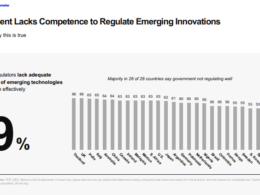Health and Technology Institute (HTI)
for continuous transformation
Joaquim Cardoso MSc.
Chief Research and Strategy Officer (CRSO),
Editor and Chief and Senior Advisor
June 10, 2023
ONE PAGE SUMMARY
This is a one page summary of the article “There Is No A.I.”, published on “The New Yorker”, authored by Jaron Lanier, on April 20, 2023.
The article “There Is No A.I.” by Jaron Lanier challenges the commonly used term “artificial intelligence” (A.I.) and suggests that understanding it as a tool rather than a sentient being is crucial.
Lanier argues that the mythologizing of A.I. technology, fueled by popular culture and doomsday predictions, can lead to mismanagement and hinder our ability to harness its potential.
The author highlights that A.I. should be viewed as an innovative form of social collaboration, with programs like GPT-4 being a mashup of human-created data and not independent intelligent entities.
This perspective emphasizes the importance of human agency and the need to design and operate the technology responsibly.
While acknowledging the flexibility and unpredictability of A.I. systems, Lanier explains that their behavior is rooted in complex mathematics rather than true intelligence.
A.I. tools, like GPT-4, rely on statistical correlations in vast amounts of processed text to generate responses, providing a non-repeating and seemingly lively experience.
The article explores the potential benefits of A.I., such as increased flexibility in digital systems and personalized experiences.
However, Lanier cautions that the new technology can also pose risks, pushing us in ways we may not understand or desire.
Policy discussions around A.I., such as alignment, safety, and fairness, often remain vague and fail to provide effective safeguards.
To address these concerns, Lanier proposes the concept of “data dignity” as an alternative to the current data-for-services arrangement.
Data dignity advocates for connecting digital content to the individuals who created it, enabling proper attribution and compensation.
This approach would foster a more transparent and equitable relationship between users, technology, and content creators.
Implementing data dignity requires technical research and policy innovation, but it holds the potential to reshape the tech industry for the better.
By acknowledging the unique contributions of individuals in the creation of valuable outputs from A.I. systems, data dignity can address economic worries and ensure that workers are valued and rewarded.
In conclusion:
Understanding A.I. as a tool for social collaboration and embracing the concept of data dignity can lead to more responsible management of the technology.
By dispelling the myth of true artificial intelligence and focusing on human agency, we can navigate the challenges and opportunities presented by A.I. effectively.
While acknowledging the flexibility and unpredictability of A.I. systems, Lanier explains that their behavior is rooted in complex mathematics rather than true intelligence.
Full version originally published at https://www.newyorker.com on April 20, 2023.
Jaron Zepel Lanier is an American computer scientist,[1] visual artist, computer philosophy writer, technologist, futurist, and composer of contemporary classical music.













